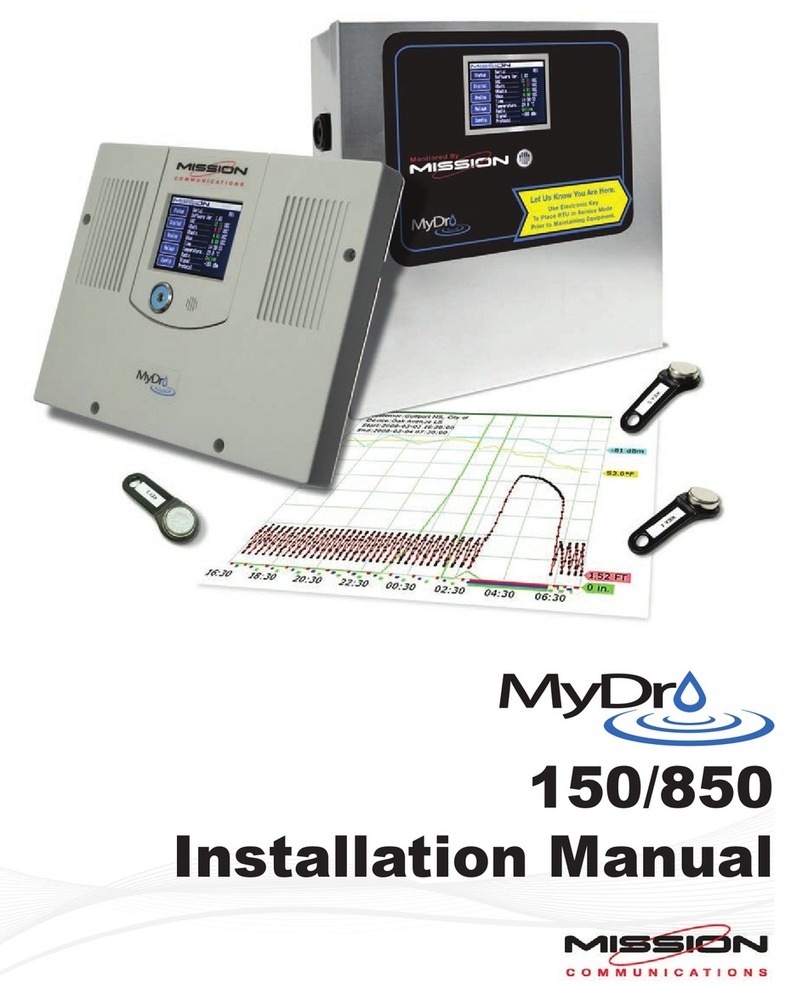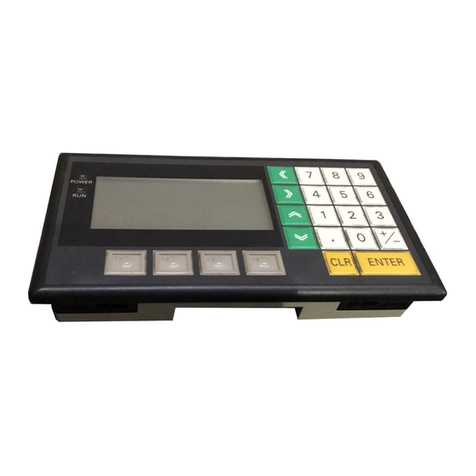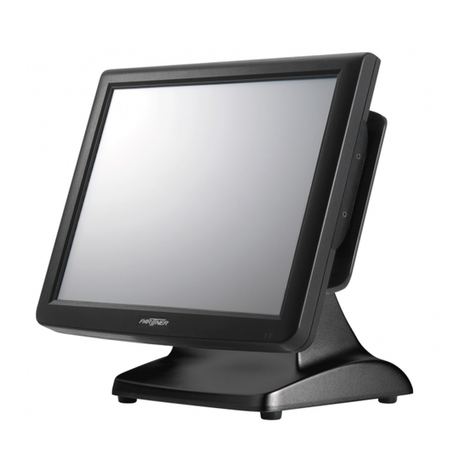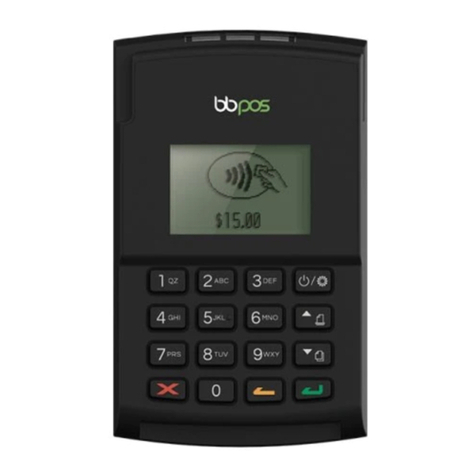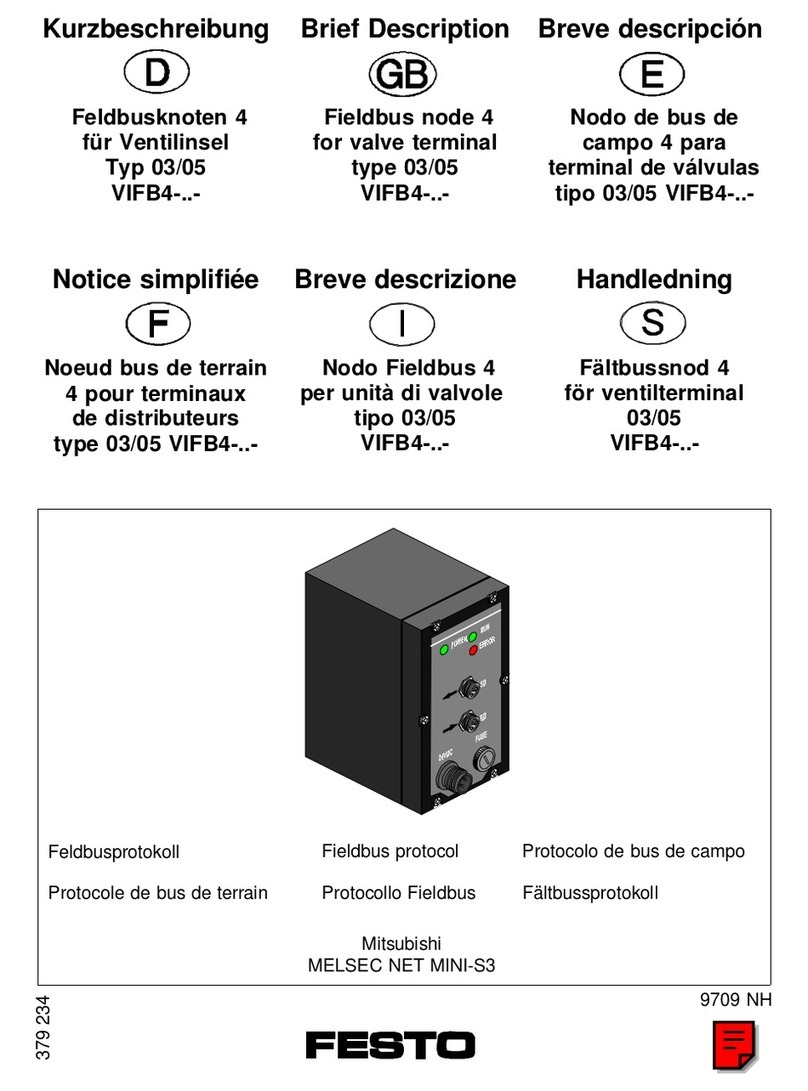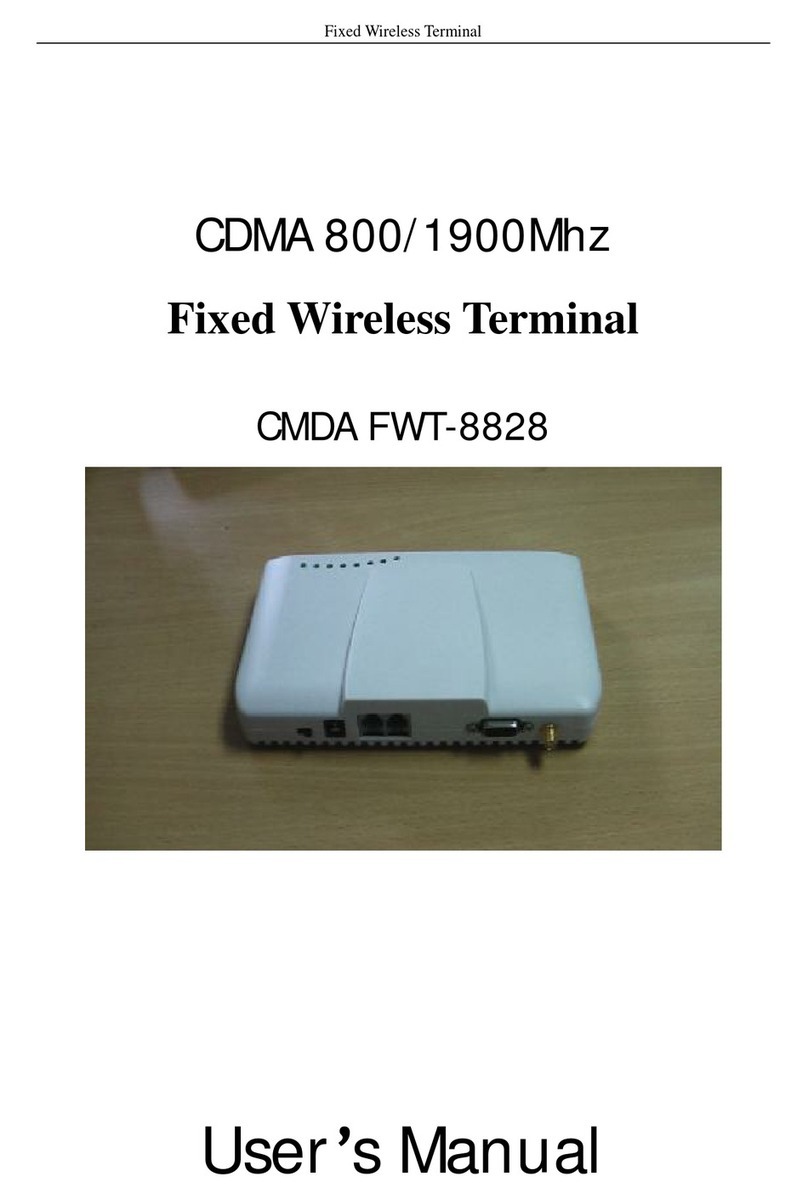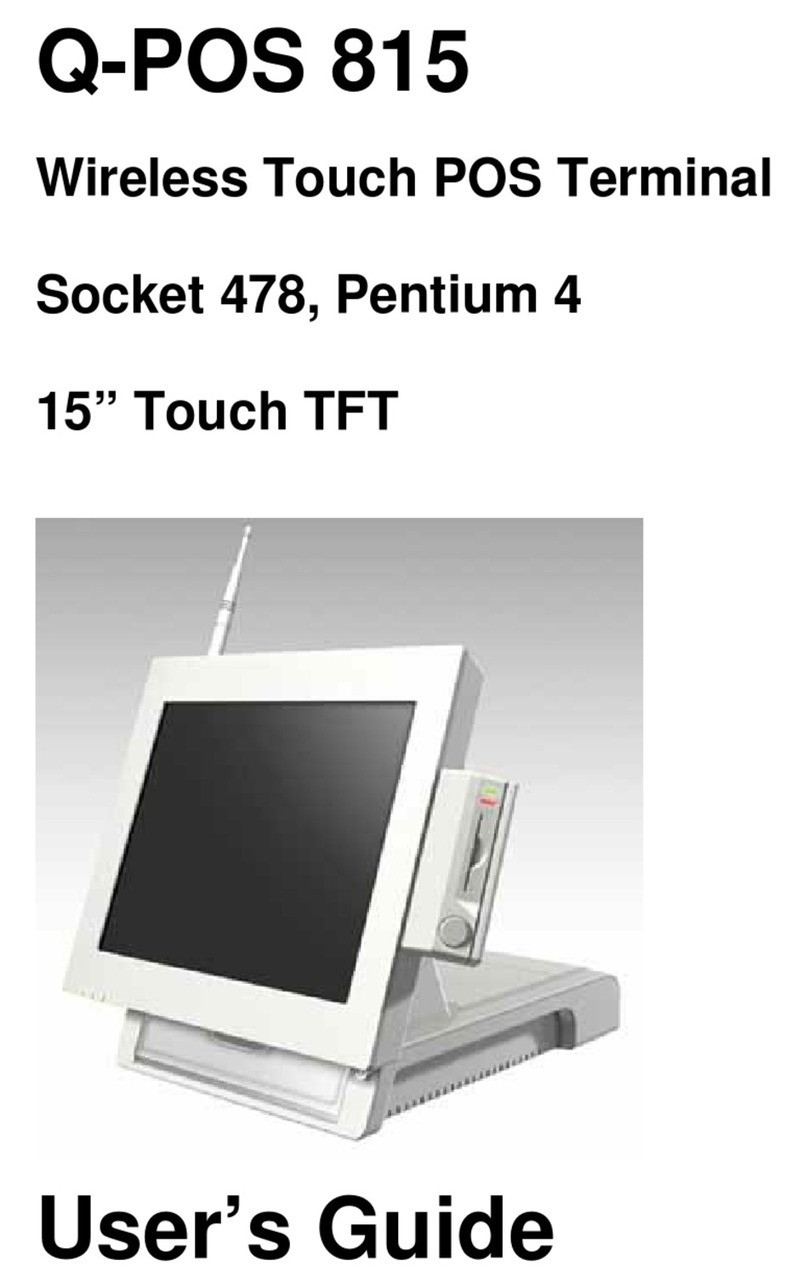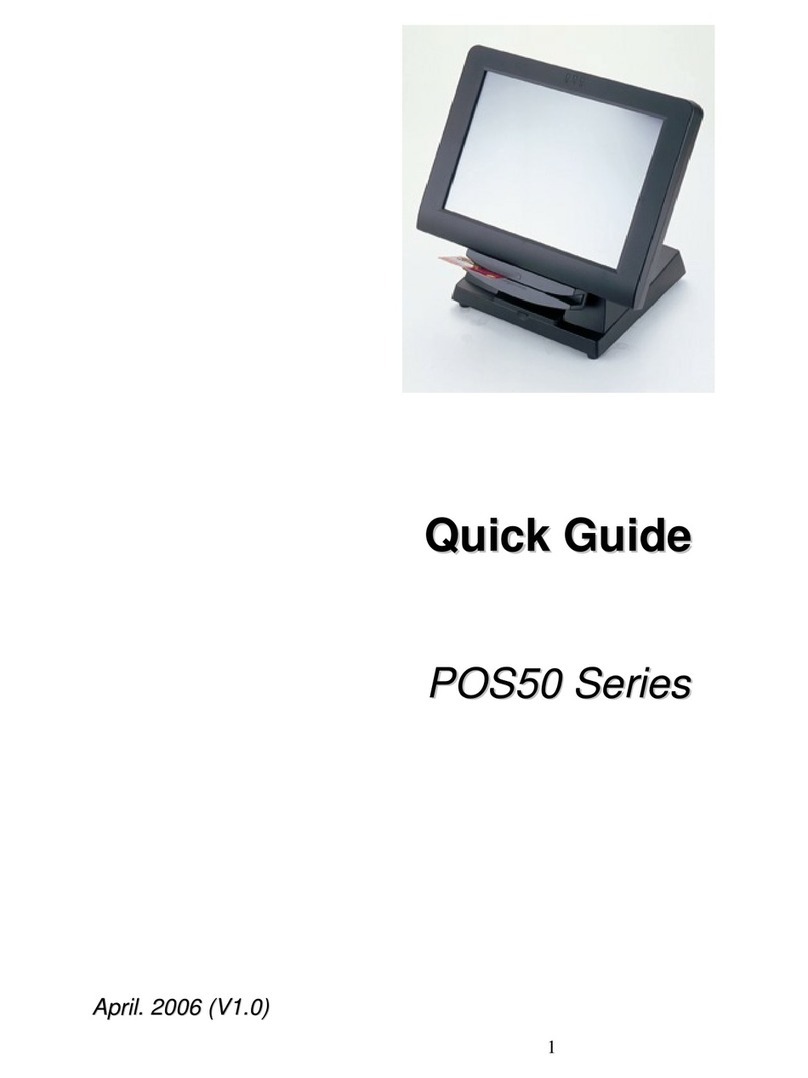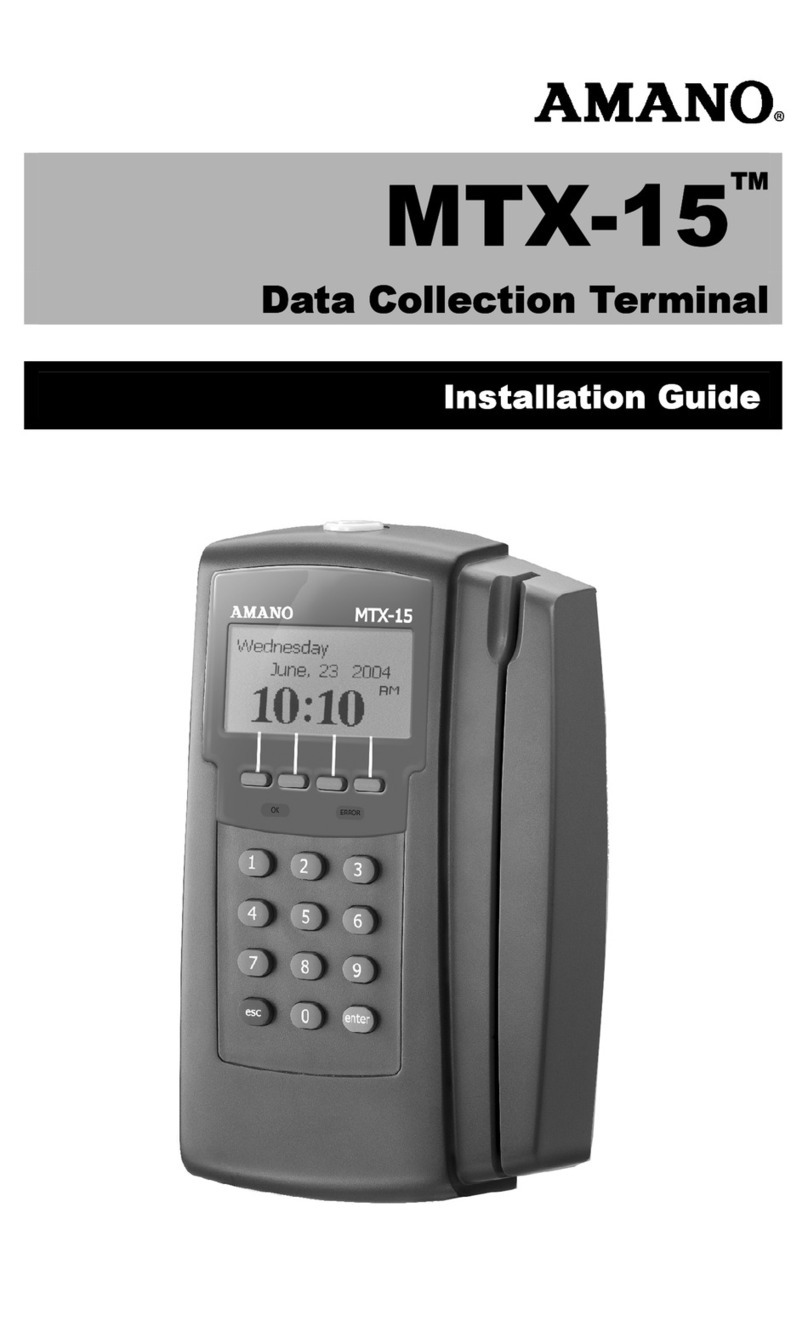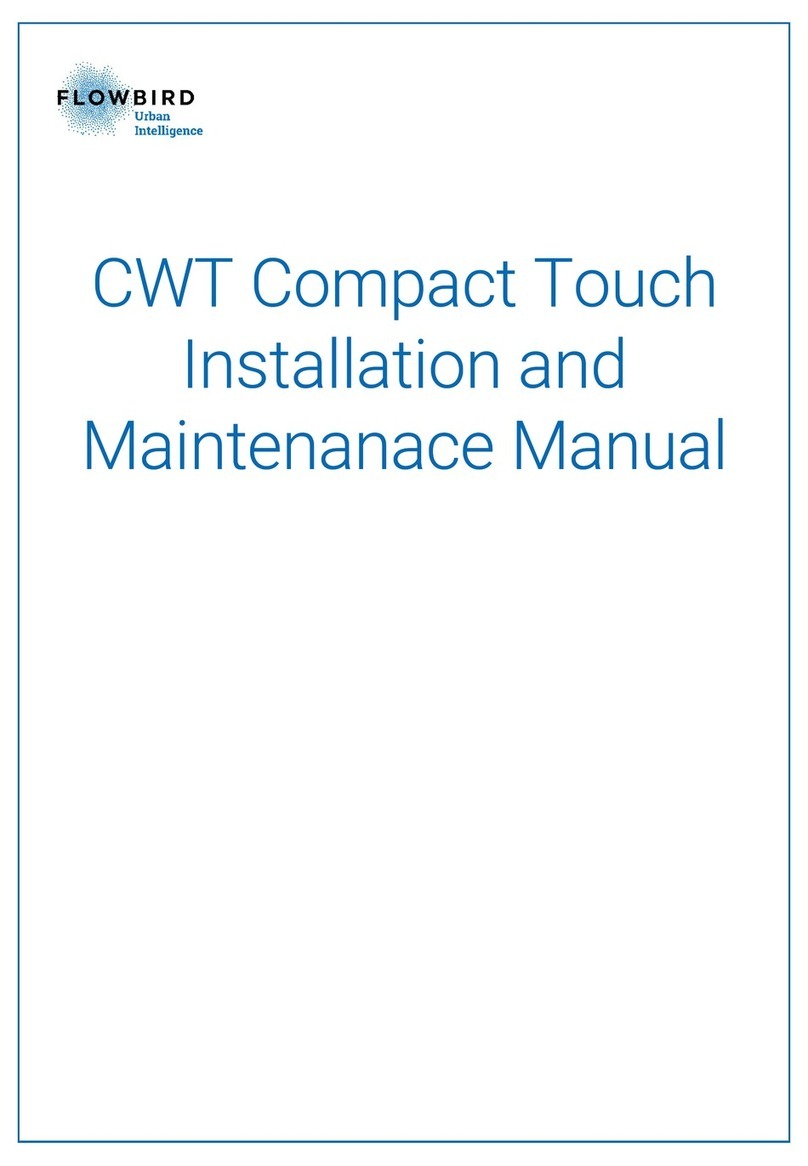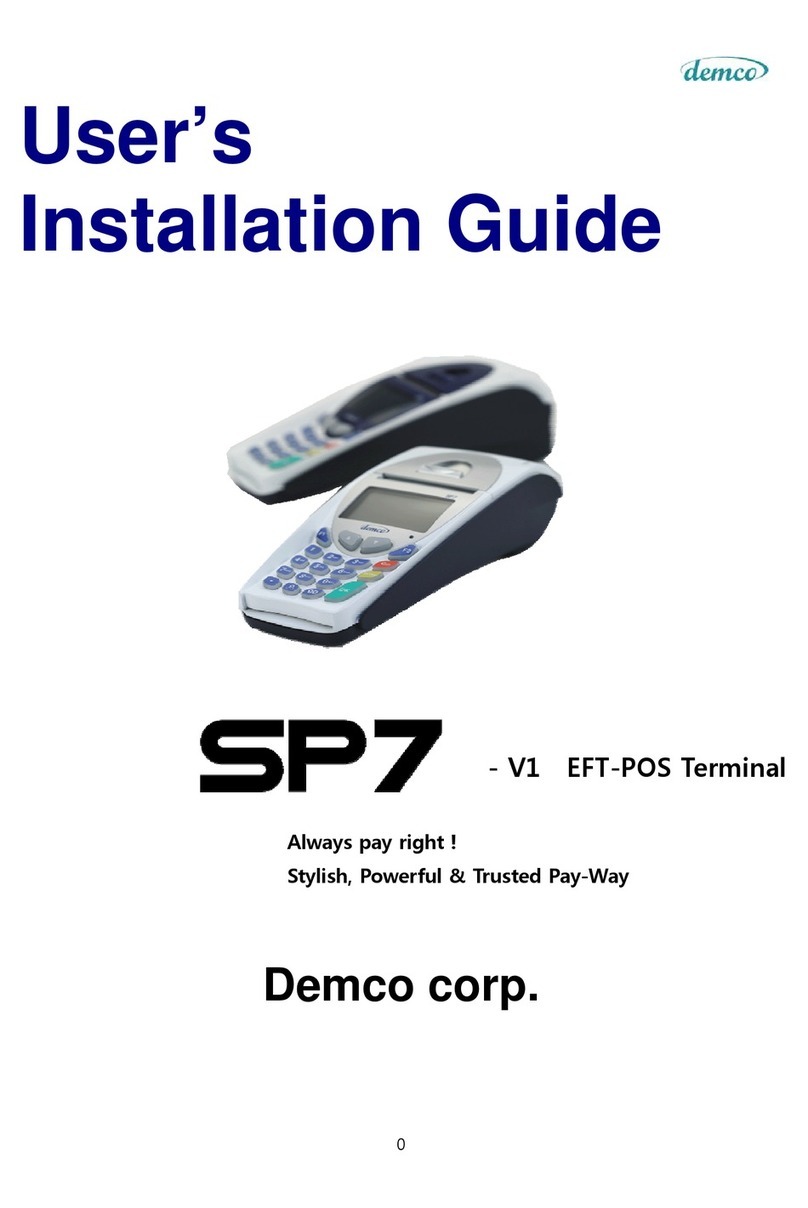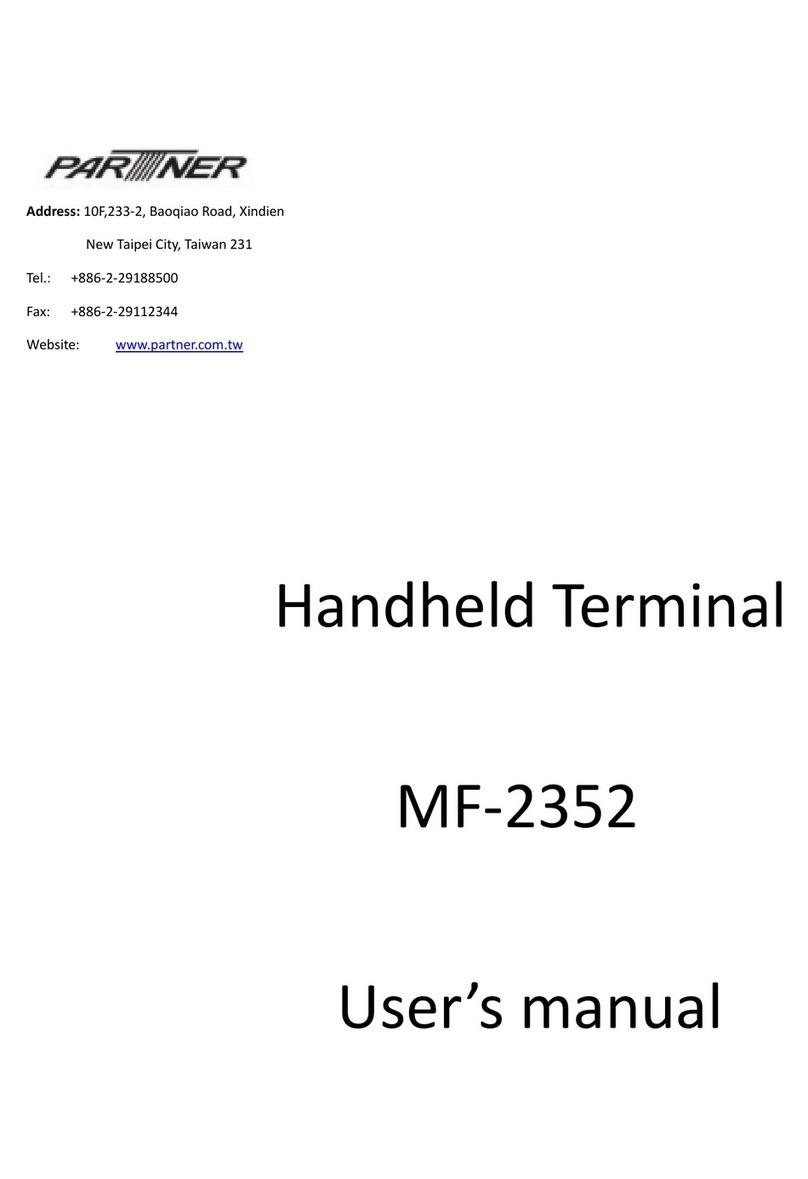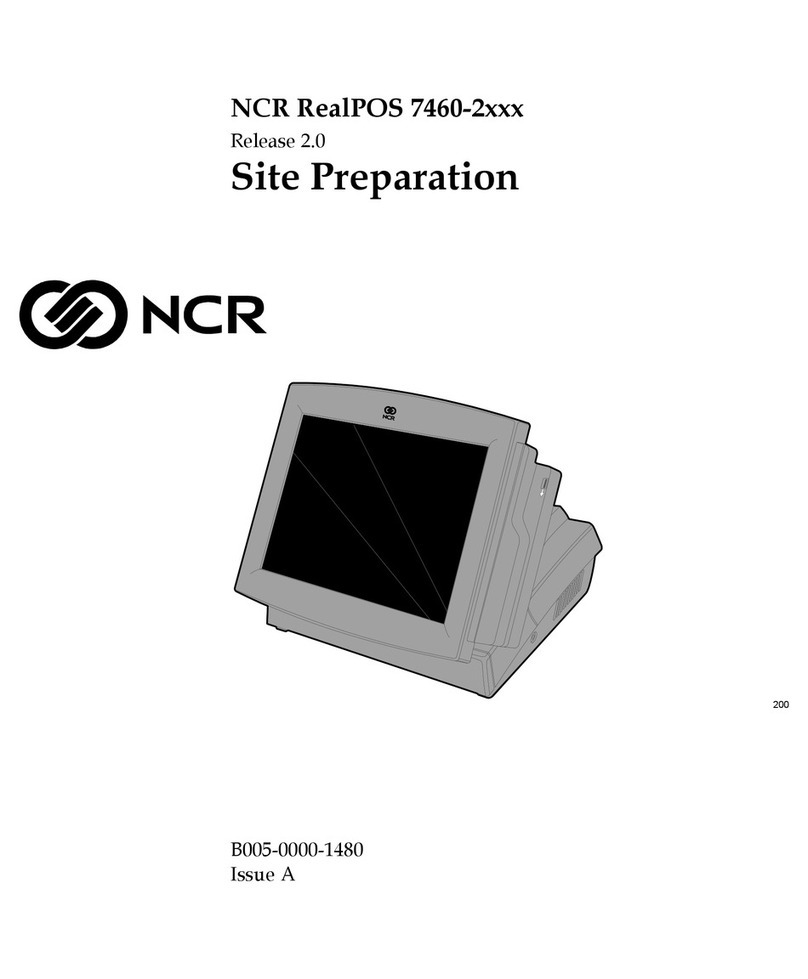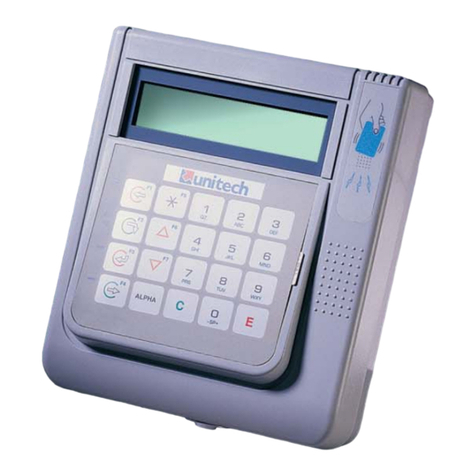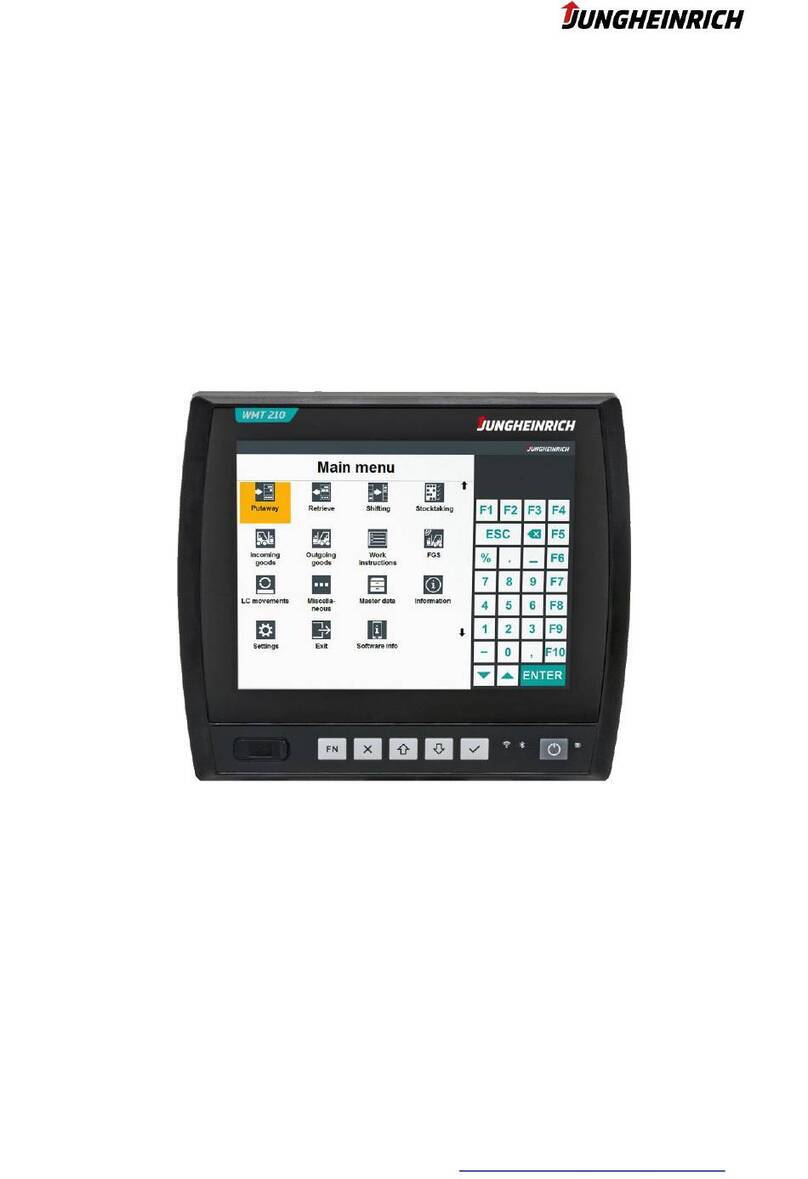Mission MyDro M150 User manual

150/850
Installation Manual
PMS 660

2
Welcome,
This manual is intended to guide end-users through the proper installation for MyDro
(M150 and M850) remote terminal units (RTUs). The beginning chapters focus on pre-
installation and are intended to optimize installation. Mission recommends users read
this document completely and conrm that all necessary materials have been gathered
before beginning the installation process.
Prior to installation, users should complete and submit the RTU Setup Forms associated
with the units to be installed to [email protected]. New customers will have
additionally received the Account Setup Form and Notication Setup Form, which should
also be submitted before installing RTUs.
See the back cover of this document for information about available support resources,
including weekly webinars, training tutorials, quarterly newsletters, troubleshooting
documentation, and Twitter updates.
Mission Technical Support is available 24-7-365 on a responsive callback basis for after-
hour emergencies at (877) 993-1911 option 2 or [email protected]. Please have
the customer name and appropriate unit serial number ready.
Thank you,
The Mission Communications Team
Warning: This symbol indicates there is caution or warning to avoid damage to your property or product.
Note: This symbol indicates that there is something that requires your special attention.
This device complies with part 15 of the FFC Rules. Operation is subject to the following two conditions: (1) This
device may not cause harmful interference, and (2) this device must accept any interference received, including
interference that may cause undesired operation.
This device is SGS Safety Certied
710198

3
Contents
Chapter 1: Overview
Chapter 2: Site Survey and Connectivity Test
Chapter 3: Antenna Installation
Chapter 4: RTU Installation and Wiring
Chapter 5: RTU Startup
Chapter 6: Test the Installation
Chapter 7: Site Commissioning
Appendix A: Terminology
Appendix B: Solid State Relay Wiring Diagram
4
6
8
10
15
17
19
20
22

4
Chapter 1: Overview
M150/M850 at a Glance
Each RTU is packaged with everything
necessary for a standard installation
Enclosures
NEMA 1—indoor mounting
NEMA 4X—outdoor mounting
FlatPak—control panel inner door mounting
FlatPak Retrot—(convert M110 or M800
to MyDro)
Hardware Included with RTUs
RTU with NEMA 1, NEMA 4X, or FlatPak enclosure
RTU Installation Packet: RTU Form, User Guide, and emergency notice label
Battery—12 volt, 5 amp-hour
Flying Lead Transformer—120 VAC to 12 VAC, 1.2 amp
Universal Antenna Mount Kit: 11’ RG58 cable with SMA-M connector, pole, or wall
mount bracket, dual-band antenna whip, mini whip antenna, (2) pole clamps, and
(2) MOVs rated for 120-volt control circuits
Accessory Bag: (4)1000 ohm long, yellow EOL resistors, (8) 1000 ohm EOL
resistors, (2) current sensing switches, tie wraps, (4) wire nuts, (8) screws, (2)
ferrite cores, and an interchangeable Phillips/athead screwdriver
New customers will also be given a New Customer Packet which includes Account and
Notication Setup Forms, (5) electronic keys with instructions, and the Managed SCADA
document.

5
Recommended Tools and Materials (Not Included)
Mechanical Tools Electrical Tools Materials
Drill motor Voltmeter/multimeter 18 or 22 gauge wire—2,
4, or 8 conductor stranded
and shielded
Step drill or 3/4” hole saw Wire cutters 12–14 gauge green wire
for grounding the RTU
(follow NEC standards)
Hack/reciprocating saw Wire strippers 3/4” Flex conduit with
straight and elbow ttings
Metal cutting blades Unistrut rail and hardware
for mounting
Pliers Interposing relays and
bases (if no dry contacts
are available)
5/16” nut driver Interposing relay (if output
relays will be used)
Phillips-head screwdriver Sealant
Ladder (for antenna
mounting)
Available Input/Output Expansion
Mission offers a variety of expansion modules to extend the utility of the RTU. Available
options are summarized below:
• Safe Module Plus: intrinsically safe oat circuit, local relay, 4 pulse channels
• Digital Input: adds 8 channels
• Analog Input: adds 4 channels
• Analog Output: provides 2 channels
• Pulse Input: provides 2 channels
For more information, see the Safe Module Plus and
MyDro Expansion Module specication sheets, as well
as the Expansion Module Installation manual.

6
Chapter 2: Site Survey and Connectivity Test
Prior to installation, please complete and submit the RTU Installation Form via fax
at (770) 685-7913 or email to [email protected] so Mission can set up the
new unit(s) on your web portal. New customers must also complete and submit both
forms within the New Customer Packet. The web portal can be accessed with the
login credentials you provided within the Account Setup Form. Once completed and
entered by Technical Support, alarms can be enabled for your RTU(s) immediately after
installation so you can perform end-to-end testing.
By powering the RTU and testing connectivity before mounting the hardware, you can
optimize the signal strength for years of trouble-free communication. The test only takes
a few minutes because the included battery provides temporary power. Refer to Chapter
3 for best practices when positioning the antenna.
1. Remove the RTU from the box and place it on or near the control panel it will be
monitoring. Remove the antenna cable and antenna whip from the package and
hand-tighten the SMA-M connector to the radio SMA-F connection on the RTU
(see Figure 1).
2. Screw the antenna whip onto the molded antenna base and place it outside as high
as possible. Mount the antenna to the aluminum bracket.
Warning: Hand-tighten the nut on the underside plus 1/4 turn with a wrench. Do
not overtighten.
3. Power the RTU with the 12 VDC battery (see Figure 1). Connect the negative (black)
lead to the battery and then connect the positive (red) lead. Once the sequence is
completed, you will hear three beeps from the buzzer. This indicates the unit has
connected to Mission servers. If the RTU does not connect after two attempts, call
Technical Support.
4. Notice the signal strength reading on the LCD as shown in Figure 1. The goal is
to mount the antenna where the signal is the strongest. A -75 dB signal is better
than that of -100 dB. Temporarily position the antenna for about a minute in a few
locations and take note of the signal strength.

7
Figure 1:
Main Printed Circuit Board Wired for Site Survey

8
Overview
The antenna should be mounted outdoors
and above other objects. By optimizing the
placement of the antenna, you increase the
chances that the radio can communicate with
more than one cell tower. The coaxial cable
should reach the Mission RTU radio connection
with no severe routing of the coaxial cable.
Consider where the RTU will be mounted in
relation to the location of the antenna.
1. Install the antenna cable and antenna whip.
Connect the SMA-M cable connector to the
SMA-F connector on the mainboard (see
Figure 1). Unscrew the nut from the molded
antenna base. Feed the molded antenna
base through the square cut out on the
bracket. Place the molded antenna base in
the circle cutout.
Warning: Secure the molded antenna
base to the bracket with the nut. Hand-
tighten the nut, plus ¼ turn with a
wrench. Do not overtighten.
2. Install the mounting bracket. Mount the
Universal Antenna Mount directly on the
face of a at surface or a metal pipe using
the included pipe clamps (placing above
any obstruction).
Note: The mini whip antenna may provide
superior connectivity for applications
using LTE service. Mission recommends
trying this antenna during installation
and appreciates any feedback from eld
experience.
Chapter 3: Antenna Installation
Tie wraps Hose clamp nut

9
Antenna Best Practices
Do Don’t
Mount the antenna outside as high as possible,
preferably above the roof or other objects.
Mount the antenna underground, in a dry well, or
inside a canned lift station.
Mount the antenna above all metal surfaces close
to the installation.
Mount the antenna horizontally or bend the antenna
whip.
Coil excess coaxial in circles of 5–7 inches in
diameter. Pinching or tight bends in the coaxial can
restrict the high frequency/low power radio signal
path in much the same way water ow is restricted
through a tight bend in a hose.
Mount the antenna inside a metal control cabinet.
Even berglass cabinets degrade the signal.
Ensure that the weight of the cable does not
damage the antenna base. There should be enough
slack in the cable so it does not rest or touch the top
surface of the mounting bracket.
Mount the antenna on the side of a metal cabinet
or adjacent to a tank. Metal surfaces will reect
the radio signal, preventing it from traveling in all
directions.
Incorporate a drip loop when installing the cable to
prevent water from penetrating into the building or
enclosure.
Cut, lengthen, or shorten the coaxial cable.
Mission can supply antenna extension cables and
connectors up to 50 feet. For lengths above this
limit, another RTU mounting location should be
considered.
Wiring Best Practices
• Signal cables should not run parallel with high voltage AC wires (load conductors).
• Where signal wires and load conductors must cross, do so at right angles.
• High voltage should not enter the Mission RTU. Mount the supplied transformer outside the Mission
enclosure.
• Lay wires in wire trays with the excess near terminations. Replace wire race covers
• Cables used for digital and analog inputs should be 18 to 22 gauge, shielded, twisted pair wire with the
shield connected to ground at the RTU and not on the other end of the cable (to prevent ground loop
current).
• MOVs can be installed across AC contactor coil terminals to shunt voltage spikes away from the RTU
inputs and other electronics in the panel. Voltage spikes can be caused by coils de-energizing. The
included MOVs are rated for 120 V circuits and will suppress excess voltage above 150 V. These parts
are application dependent. They have a nite lifespan and will need to be replaced over time.
Warning: Follow requirements for eld wiring installation and grounding as
described in NEC and the local/state electrical codes.

10
Locate the RTU as close as possible to the
control cabinet while considering the antenna
cable length.
Warning: Turn off station power to
avoid damage to mainboard.
Note: MyDro units should be connected
to a LPS-certied power supply (12 VAC
60 Hz ~ or 12 VDC ).
1. Mount the enclosure.
2. Cut the conduit and wiring holes. Drill and
attach the conduit in the control cabinet
and Mission RTU. Use sealant where
appropriate.
3. Pull the wires and cables.
4. Ground the RTU. Use 12 to 14 gauge
green wire to connect the grounding lug
on the backplate in the RTU to the stations
Earth ground (refer to Figure 1).
Note: If using the Safe Module Plus
for sensing the high-level oat in an
intrinsically safe manner, install it now.
Refer to the MyDro Expansion Module
Installation Manual for more information.
5. Terminate digital inputs. Refer to the
wiring diagram on the M150/M850 cover/
door and the RTU Installation Form in the
packing box. Record input names on the
setup form and the diagram.
Chapter 4: RTU Installation and Wiring
Enclosure Options
NEMA 4X
Mount outdoors on
unistrut or a wall. Allow
clearance for hinge (left)
and key reader (right).
Consider the NEMA 4 for
indoor application where
wash-downs occur.
Conduit connections
can enter from bottom,
but leave space for the
included battery.
NEMA 1
FlatPak
Use indoors where no wash-downs occur.
Allow for space on bottom of the enclosure for
the battery.
Mount inside the control cabinet.
Two large holes are provided for through-wires.
Place battery inside the control cabinet.
This manual suits for next models
1
Table of contents
Other Mission Touch Terminal manuals
